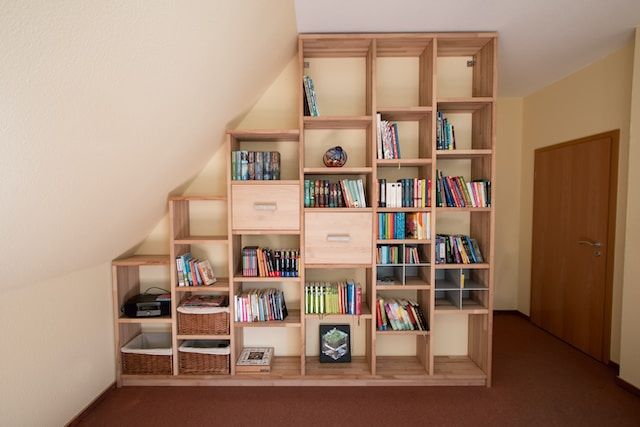Furniture manufacturing has traditionally been associated with significant environmental impact, from deforestation to the use of toxic chemicals in manufacturing processes.
However, in recent years, the demand for sustainable furniture manufacturing has been increasing as consumers become more aware of the impact of their purchasing decisions on the environment.
This has led furniture manufacturers to explore new materials and manufacturing processes to create products that are both stylish and environmentally friendly.
In this article, we will explore the advancements in sustainable furniture manufacturing. Let’s take a look at the table of content below:
- Definition of Sustainable Furniture Manufacturing
- Importance of Sustainable Furniture Manufacturing
- Sustainable Materials for Furniture Manufacturing
- Types of Sustainable Materials Used in Furniture Manufacturing
- Sustainable Manufacturing Processes
- Innovative Designs and Technologies for Sustainable Furniture
- Consumer Demand for Sustainable Furniture
- Case Studies: Advancements in Sustainable Furniture Manufacturing
- Wrapping Up
- How Deskera Can Assist You?
Let's get started!
Definition of Sustainable Furniture Manufacturing
Sustainable furniture manufacturing is the practice of creating furniture in a way that minimizes negative environmental impact and maximizes social and economic benefits.
Furthermore, this involves using sustainable materials, employing sustainable manufacturing processes, and implementing innovative designs and technologies that promote sustainability.

Sustainable furniture manufacturing also involves taking into account the entire lifecycle of the product, from raw materials sourcing to end-of-life disposal, and ensuring that the furniture has minimal impact on the environment and society throughout its entire lifespan.
Importance of Sustainable Furniture Manufacturing
Sustainable furniture manufacturing is important for several reasons, including:
Environmental preservation: Furniture manufacturing can have a significant impact on the environment, from deforestation to the use of hazardous chemicals in manufacturing process. Sustainable furniture manufacturing aims to minimize this impact and preserve natural resources for future generations.
Climate change mitigation: The furniture industry is a significant contributor to greenhouse gas emissions. Sustainable furniture manufacturing can help reduce these emissions by using renewable energy sources, minimizing waste, and reducing energy consumption.
Social responsibility: Sustainable furniture manufacturing prioritizes fair labor practices, worker safety, and ethical sourcing of materials. This further helps to create a more socially responsible industry that supports the well-being of workers and communities.
Economic benefits: Sustainable furniture manufacturing can create economic opportunities for local communities and promote the growth of small businesses. It can also help reduce long-term costs by minimizing waste and reducing energy consumption.
Overall, sustainable furniture manufacturing is important for creating a more sustainable and equitable industry that benefits both people and the planet.
Sustainable Materials for Furniture Manufacturing
Sustainable materials for furniture manufacturing refer to materials that have a reduced environmental impact compared to traditional materials, and that are sourced and produced using sustainable practices.
Furthermore, sustainable materials can be natural, recycled, or synthetic, and can be used to create a wide variety of furniture styles and designs. Some examples of sustainable materials used in furniture manufacturing include bamboo, reclaimed wood, recycled plastic, natural rubber, and organic cotton.
The use of sustainable materials helps to minimize the negative environmental impact of furniture production, reduce waste, and promote the conservation of natural resources. Additionally, sustainable materials often have unique textures, colors, and qualities that can add character and value to furniture pieces.
Types of Sustainable Materials Used in Furniture Manufacturing
There are several types of sustainable materials used in furniture manufacturing, including:
Bamboo: Bamboo is a fast-growing, renewable resource that can be used to make a variety of furniture pieces. It is durable, lightweight, and has a unique texture that can add character to furniture designs.
Advantages:
- Renewable resource that grows quickly and does not require replanting
- Strong and durable, making it suitable for furniture pieces
- Lightweight, making it easy to transport and handle
- Has a unique texture that can add character to furniture designs
Disadvantages:
- Some bamboo is not harvested sustainably, which can lead to deforestation and habitat destruction
- Bamboo can be vulnerable to pests and diseases, which can impact its quality and durability
- Processing bamboo into usable material can be energy-intensive
Reclaimed wood: Reclaimed wood is salvaged from old buildings, bridges, and other structures that are no longer in use. It is a sustainable alternative to traditional wood and can add a rustic or vintage look to furniture pieces.
Advantages:
- Sustainable alternative to traditional wood
- Can add a rustic or vintage look to furniture pieces
- Has a unique character and history that can add value to furniture designs
Disadvantages:
- Availability can be limited, depending on the location and availability of reclaimed wood sources
- Quality can be variable, depending on the age and condition of the wood
- Processing reclaimed wood can be labor-intensive and costly
Recycled plastic: Recycled plastic can be used to make furniture pieces that are lightweight, durable, and easy to clean. It is a sustainable alternative to traditional plastics and can be made from a variety of sources, including post-consumer waste.
Advantages:
- Made from post-consumer waste, reducing the amount of plastic in landfills and oceans
- Lightweight, durable, and easy to clean, making it suitable for furniture pieces
- Can be made in a variety of colors and styles
Disadvantages:
- Can emit harmful chemicals during production and end-of-life disposal
- Can be more expensive than traditional plastics
- Some recycled plastic can be of lower quality and durability than virgin plastic
Natural rubber: Natural rubber is a sustainable material that can be used to make furniture cushions and other soft furnishings. It is biodegradable, non-toxic, and has excellent cushioning properties.
Advantages:
- Biodegradable and non-toxic, making it a sustainable alternative to synthetic materials
- Has excellent cushioning properties, making it suitable for furniture cushions and other soft furnishings
- Comes from a renewable resource
Disadvantages:
- Can be more expensive than synthetic materials
- Production can be energy-intensive and require large amounts of water
- Can degrade over time if exposed to sunlight or other environmental factors
Organic cotton: Organic cotton is grown without the use of harmful pesticides and chemicals, making it a sustainable alternative to traditional cotton. It can be used to make furniture covers, cushions, and other soft furnishings.

Advantages:
- Grown without harmful pesticides and chemicals, making it a sustainable alternative to traditional cotton
- Soft and comfortable, making it suitable for furniture covers, cushions, and other soft furnishings
- Biodegradable, reducing environmental impact at end-of-life disposal
Disadvantages:
- Can be more expensive than traditional cotton
- Production can require large amounts of water and energy
- Limited availability compared to traditional cotton
Cork: Cork is a sustainable material that can be used to make furniture pieces that are lightweight, durable, and water-resistant. It is harvested from the bark of cork oak trees and can be recycled or composted at the end of its useful life.
Advantages:
- Sustainable alternative to synthetic materials
- Lightweight, durable, and water-resistant, making it suitable for furniture pieces
- Comes from a renewable resource
Disadvantages:
- Availability can be limited, depending on the location and availability of cork oak trees
- Quality can be variable, depending on the age and condition of the cork
- Processing cork into usable material can be labor-intensive and costly
These are just a few examples of sustainable materials used in furniture manufacturing. There are many other materials available, each with their own unique properties and benefits.
Sustainable Manufacturing Processes
Sustainable manufacturing processes refer to the methods and techniques used by manufacturers to reduce their environmental impact and promote sustainability.
This involves implementing practices that reduce energy and resource consumption, minimize waste generation, and promote the use of renewable and non-toxic materials.
Furthermore, sustainable manufacturing processes can apply to all aspects of the production process, from sourcing raw materials to packaging and transportation.
Some common sustainable manufacturing practices include using renewable energy sources, such as solar or wind power, to power manufacturing facilities, optimizing production processes to reduce energy and resource consumption, using recycled materials in production, implementing closed-loop production systems where waste is reused or recycled, and designing products with end-of-life recyclability in mind.
Sustainable manufacturing processes not only benefit the environment, but they can also have economic benefits for manufacturers, such as reduced energy costs, improved efficiency, and enhanced brand reputation.
As consumers become increasingly concerned about the environmental impact of the products they buy, sustainable manufacturing practices can also provide a competitive advantage for manufacturers in the marketplace.
Types of Sustainable Manufacturing Processes Used in Furniture Manufacturing
Following, we’ve discussed some examples of sustainable manufacturing processes used in furniture manufacturing:
Lean Manufacturing:
Lean manufacturing is a production method that focuses on minimizing waste and maximizing efficiency. By streamlining production processes and reducing unnecessary steps, manufacturers can reduce their energy and resource consumption, while also improving productivity.
Advantages:
- Reduced waste and increased efficiency leads to cost savings for the manufacturer
- Lower energy and resource consumption reduces the environmental impact of the manufacturing process
- Improved productivity and product quality
Disadvantages:
- Implementation may require significant investment and changes to existing production processes
- Can be difficult to balance efficiency and sustainability goals
Closed-Loop Production Systems:
Closed-loop production systems involve using waste materials as inputs for new products. By reusing and recycling waste, manufacturers can minimize their environmental impact and reduce the amount of waste sent to landfills.
Advantages:
- Minimizes waste and reduces environmental impact
- Can lead to cost savings by reducing the need for raw materials
- Improves resource efficiency
Disadvantages:
- Requires significant investment in recycling and waste management infrastructure
- Limited availability of recycled materials may restrict production capacity
Green Sourcing:
Green sourcing involves selecting raw materials and suppliers based on their environmental performance. By choosing sustainably sourced materials and suppliers that follow sustainable practices, manufacturers can reduce their environmental impact and promote sustainability throughout their supply chain.
Advantages:
- Supports sustainable suppliers and practices, promoting sustainability throughout the supply chain
- Reduces environmental impact of raw material sourcing
- Builds positive brand reputation
Disadvantages:
- Sustainably sourced materials may be more expensive or less available
- Requires significant effort to identify and evaluate sustainable suppliers
Renewable Energy:
Using renewable energy sources, such as solar or wind power, to power manufacturing facilities can help reduce greenhouse gas emissions and promote sustainability.
Advantages:
- Reduces greenhouse gas emissions and promotes sustainability
- Can lead to cost savings over time
- Reduces dependence on fossil fuels
Disadvantages:
- Requires significant investment in renewable energy infrastructure
- Renewable energy sources may be less reliable than traditional energy sources
Design for Sustainability:
Designing products with sustainability in mind can help reduce waste and promote recycling. By using materials that are easily recyclable or biodegradable, and designing products for easy disassembly and recycling, manufacturers can minimize the environmental impact of their products.
Advantages:
- Reduces waste and promotes recycling
- Can improve product quality and customer satisfaction
- Builds positive brand reputation
Disadvantages:
- Design for sustainability may increase production costs
- Can be difficult to balance design for sustainability with other product design goals
These are just a few examples of sustainable manufacturing processes used in furniture manufacturing. Manufacturers can also implement other sustainable practices, such as reducing packaging waste, using non-toxic materials, and promoting energy-efficient transportation.
Examples
Here are some examples of furniture manufacturers using sustainable manufacturing processes:
Knoll:
Knoll is a furniture manufacturer that has implemented sustainable manufacturing processes throughout its operations. The company has set ambitious sustainability goals, including reducing greenhouse gas emissions by 50% and using 100% renewable energy by 2025.
Moreover, Knoll has also implemented closed-loop production systems to reduce waste and promote recycling, and uses sustainable materials in its products.
Steelcase:
Steelcase is a furniture manufacturer that has made significant investments in renewable energy sources, including wind and solar power, to power its manufacturing facilities. The company has also implemented closed-loop production systems to reduce waste and promote recycling, and uses sustainable materials in its products.
Furthermore, steelcase has been recognized for its sustainability efforts by numerous organizations, including the Environmental Protection Agency and the Dow Jones Sustainability Index.
Teknion:
Teknion is a furniture manufacturer that has implemented sustainable manufacturing practices throughout its operations. The company has implemented closed-loop production systems to reduce waste and promote recycling, and uses sustainable materials in its products. Teknion has also set ambitious sustainability goals, including reducing greenhouse gas emissions by 30% by 2030.
These are just a few examples of furniture manufacturers that have implemented sustainable manufacturing processes. By investing in sustainability, these companies are reducing their environmental impact, improving efficiency, and building positive brand reputations.
Innovative Designs and Technologies for Sustainable Furniture
Innovative designs and technologies are changing the landscape of sustainable furniture manufacturing. From new materials to smart manufacturing processes, furniture manufacturers are finding innovative ways to create products that are both environmentally friendly and aesthetically pleasing.
In this section, we'll explore some of the latest advancements in sustainable furniture design and technology.
Introduction to Innovative Designs and Technologies for Sustainable Furniture
As sustainability becomes an increasingly important consideration for consumers and manufacturers alike, furniture designers and manufacturers are exploring new and innovative ways to create products that are both environmentally friendly and stylish.
Advances in materials science, manufacturing processes, and product design are making it possible to create furniture that meets the highest standards of sustainability without sacrificing quality or aesthetics.
In this section, we'll explore some of the latest developments in sustainable furniture design and technology, including new materials, innovative manufacturing processes, and cutting-edge product designs.
By embracing these innovations, furniture manufacturers can meet the demands of consumers who are looking for sustainable products that are both functional and beautiful.
Examples of Innovative Designs and Technologies for Sustainable Furniture
Following, we've discussed few examples of innovative designs and technologies for sustainable furniture. Let's check:
3D Printing: 3D printing is a technology that allows furniture manufacturers to create complex shapes and structures with minimal waste. By printing furniture parts layer by layer, manufacturers can minimize material usage, reduce waste, and create designs that would be impossible using traditional manufacturing methods.
Advantages:
- Minimal waste production
- Complex designs and structures can be created easily
- Customization of furniture can be done easily
- Rapid prototyping
Disadvantages:
- Expensive technology
- Limited materials suitable for 3D printing
- Slow printing process for large furniture items
- Limited size of furniture that can be printed
Recyclable Materials: Manufacturers are increasingly turning to recyclable materials, such as cardboard, bamboo, and recycled plastic, to create sustainable furniture products. These materials are eco-friendly, lightweight, and durable, making them an attractive option for both consumers and manufacturers.
Advantages:
- Eco-friendly and sustainable
- Lightweight and durable
- Can be easily recycled at the end of the product lifecycle
- Less energy-intensive to produce than traditional materials
Disadvantages:
- Limited availability and variety of materials
- Can be more expensive than traditional materials
- May not be suitable for all furniture designs
Modular Design: Modular furniture designs allow consumers to assemble and disassemble furniture easily, reducing waste and making it easier to move and transport furniture. Modular designs also allow for greater customization and flexibility, as consumers can mix and match different components to create a furniture piece that meets their specific needs.

Advantages:
- Easy to assemble and disassemble
- Customizable to meet specific needs
- Less waste production
- Easy to transport and move
Disadvantages:
- May not be suitable for certain furniture designs
- Limited design options
- May not be as durable as traditional furniture
Sustainable Textiles: Sustainable textiles, such as organic cotton, linen, and hemp, are becoming increasingly popular in furniture design. These textiles are grown without harmful chemicals and are biodegradable, making them a more eco-friendly alternative to synthetic materials.
Advantages:
- Eco-friendly and sustainable
- Biodegradable and compostable
- Chemical-free production
- Soft and comfortable to use
Disadvantages:
- Can be more expensive than synthetic materials
- Limited variety of textures and patterns
- May require special cleaning and care
Smart Manufacturing: Smart manufacturing processes, such as computer-controlled cutting and advanced robotics, are making it possible to create furniture with greater precision and accuracy, reducing waste and improving efficiency.
Advantages:
- Greater precision and accuracy
- Less waste production
- Faster production times
- Increased efficiency
Disadvantages:
- Expensive technology
- May require skilled labor
- Limited application to certain furniture designs
- May require significant investment in equipment and training
Circular Design: Circular design principles aim to create products that are designed to be reused, recycled, or repurposed at the end of their lifecycle. This approach encourages manufacturers to create products that are built to last, and that can be easily disassembled and recycled or repurposed.
Advantages:
- Sustainable and eco-friendly
- Built to last and easily repairable
- Easy to disassemble and recycle or repurpose
- Reduced waste production
Disadvantages:
- May require significant investment in research and development
- Limited variety of designs
- May require changes to supply chain and production processes
- May require consumer education and behavior change.
These are just a few examples of innovative designs and technologies that are being used in sustainable furniture manufacturing. By embracing these advancements, furniture manufacturers can create products that are both stylish and eco-friendly, meeting the demands of consumers who are looking for sustainable furniture that is both beautiful and functional.
Consumer Demand for Sustainable Furniture
Consumer demand for sustainable furniture has been growing steadily in recent years, as more people become aware of the environmental impact of traditional furniture manufacturing practices. Consumers are looking for furniture that is not only stylish and functional but also eco-friendly and socially responsible.
There are several factors driving the demand for sustainable furniture:
Environmental concerns: Consumers are becoming more environmentally conscious and are looking for furniture made from sustainable materials that have minimal impact on the environment.
Health concerns: Many consumers are concerned about the health effects of traditional furniture materials, such as formaldehyde and other VOCs (volatile organic compounds). Sustainable furniture made from natural materials or low-emitting materials can be a healthier option.
Social responsibility: Consumers are increasingly interested in buying products from companies that have ethical and sustainable business practices. Sustainable furniture companies that prioritize fair labor practices, ethical sourcing, and reducing their carbon footprint are more attractive to socially responsible consumers.
Aesthetics: Sustainable furniture is no longer seen as solely a niche product. Designers are creating beautiful and functional sustainable furniture options that appeal to a broad range of consumers.
As the demand for sustainable furniture continues to grow, furniture manufacturers are responding by creating more sustainable products and making sustainability a core part of their business strategy.
Challenges in Meeting Consumer Demand for Sustainable Furniture
While consumer demand for sustainable furniture is growing, there are still challenges that furniture manufacturers and retailers face in meeting that demand:
Cost: Sustainable materials and manufacturing processes can be more expensive than traditional methods, which can drive up the cost of sustainable furniture. This can make it difficult to price sustainable furniture competitively with non-sustainable options, which may discourage some consumers from making the switch.
Availability: Sustainable materials and manufacturing processes may not be as widely available as traditional options, which can limit the selection of sustainable furniture available to consumers.
Education: Many consumers may not be aware of the environmental impact of traditional furniture manufacturing practices, or may not fully understand the benefits of sustainable furniture. Educating consumers about sustainable furniture and its benefits can be a challenge.
Perception: Some consumers may still associate sustainable furniture with a certain aesthetic or style, which may not match their personal taste. Designers and manufacturers need to create sustainable furniture that appeals to a broad range of consumers.
Certification: There are many different certifications for sustainable furniture, which can be confusing for consumers. Manufacturers need to ensure that their products meet the relevant sustainability standards and communicate that information clearly to consumers.
Meeting consumer demand for sustainable furniture requires a commitment to sustainability from manufacturers, designers, and retailers. By overcoming these challenges and making sustainable furniture more accessible and affordable, the industry can continue to grow and meet the needs of environmentally conscious consumers.
Case Studies: Advancements in Sustainable Furniture Manufacturing
Following, we've discussed case studies of some famous companies associated with advancements in sustainable furniture manufactuing. Let's learn:
IKEA
IKEA is a global furniture company that has been making efforts to adopt sustainable furniture manufacturing. They have implemented the following practices:

Material sourcing: IKEA sources materials from sustainable sources, such as FSC-certified wood, recycled materials, and renewable energy sources. They also work to reduce waste and conserve resources in their supply chain.
Design: IKEA designs furniture with a focus on durability, functionality, and affordability. They also incorporate eco-design principles, such as reducing the use of harmful chemicals and minimizing waste during production.
Production: IKEA has implemented sustainable production practices, such as energy-efficient manufacturing processes, waste reduction initiatives, and the use of renewable energy sources.
Recycling and disposal: IKEA offers recycling programs for their products, allowing customers to dispose of their furniture in an environmentally responsible way. They also use recycled materials in their packaging and aim to minimize waste throughout their supply chain.
Transparency: IKEA is transparent about their sustainability practices, publishing detailed information on their website about the materials they use, their production processes, and their environmental impact. They also have set ambitious sustainability goals, such as becoming climate positive by 2030.
Innovation: IKEA have invested heavily in sustainable materials, such as bamboo and recycled plastic, and have also embraced innovative designs, such as modular furniture and smart manufacturing processes. One of their most recent sustainable furniture designs is the "KUNGSBACKA" kitchen cabinet line, which is made from recycled PET bottles and reclaimed wood.
Herman Miller:
Herman Miller is a furniture company that has been committed to sustainable practices for many years. They have me sustainable furniture manufacturing aspects in several ways:
Material sourcing: Herman Miller is committed to using sustainable materials in its furniture production, such as recycled content, rapidly renewable resources, and sustainably harvested wood.
Design: Herman Miller designs furniture with durability and longevity in mind, which reduces the need for replacements and waste. They also incorporate eco-design principles, such as reducing the use of harmful chemicals and minimizing waste during production. In addition, they have invested in sustainable materials and have also embraced modular design principles, creating furniture that can be easily disassembled and reused or recycled at the end of its lifecycle.
Production: Herman Miller has implemented sustainable production practices, such as energy-efficient manufacturing processes, waste reduction initiatives, and the use of renewable energy sources.
Recycling and disposal: Herman Miller offers recycling programs for their products, allowing customers to dispose of their furniture in an environmentally responsible way. They also use recycled materials in their packaging and aim to minimize waste throughout their supply chain.
Technology: Herman Miller has incorporated technology into their products, such as with the Live OS system that integrates smart sensors into furniture to optimize comfort and productivity.
West Elm:
West Elm is a furniture company that has made a commitment to sustainability in their manufacturing processes. They have met sustainable furniture manufacturing elements in several ways:
Sourcing: West Elm sources sustainable materials for their furniture production, such as FSC-certified wood, organic cotton, and recycled materials. They also work with suppliers who share their commitment to sustainability.
Design: West Elm designs their furniture with a focus on durability and longevity, reducing the need for frequent replacements and waste. They also incorporate eco-design principles, such as reducing the use of harmful chemicals and minimizing waste during production. The company also partners with local artisans to create unique, sustainable products.
Production: West Elm has implemented sustainable production practices, such as energy-efficient manufacturing processes, waste reduction initiatives, and the use of renewable energy sources.
Transparency: West Elm is transparent about their sustainability practices, publishing annual sustainability reports and providing detailed information on their products' environmental impact.
Recycling and disposal: West Elm offers recycling programs for their products, allowing customers to dispose of their furniture in an environmentally responsible way. They also use recycled materials in their packaging and aim to minimize waste throughout their supply chain.
Technology: West Elm has incorporated technology into their products and business practices, such as with their augmented reality app that allows customers to visualize furniture in their space before purchasing. They also use data analytics to improve their supply chain and reduce waste.
Blu Dot
Blu Dot is a furniture company that has been making efforts to meet sustainable furniture manufacturing. They have implemented the following practices:
Material sourcing: Blu Dot uses eco-friendly materials, such as FSC-certified wood and recycled content, in their furniture production. They also source materials from local suppliers to reduce transportation emissions.
Design: Blu Dot designs furniture that is built to last, reducing the need for frequent replacements and waste. They also incorporate eco-design principles, such as reducing the use of harmful chemicals and minimizing waste during production.
Production: Blu Dot has implemented sustainable production practices, such as energy-efficient manufacturing processes, waste reduction initiatives, and the use of renewable energy sources.
Recycling and disposal: Blu Dot offers recycling programs for their products, allowing customers to dispose of their furniture in an environmentally responsible way. They also use recycled materials in their packaging and aim to minimize waste throughout their supply chain.
Transparency: Blu Dot is transparent about their sustainability practices, publishing detailed information on their website about the materials they use, their production processes, and their environmental impact.
Innovation: They have implemented computer-controlled cutting and advanced robotics to improve efficiency and reduce waste. They have also embraced circular design principles, creating products that are designed to be reused or repurposed at the end of their lifecycle.
Ekomia
Ekomia is a furniture company that specializes in sustainable furniture manufacturing. They have met sustainable furniture manufacturing in several ways:
Material sourcing: Ekomia uses eco-friendly and sustainable materials, such as FSC-certified wood, recycled materials, and natural fibers, in their furniture production. They also source materials from local suppliers to reduce transportation emissions.
Design: Ekomia designs their furniture with a focus on durability and longevity, reducing the need for frequent replacements and waste. They also incorporate eco-design principles, such as reducing the use of harmful chemicals and minimizing waste during production. In addition, they produce furniture that is made from sustainable materials, such as recycled wood and cardboard, and that is designed to be easily disassembled and recycled at the end of its lifecycle. They also use smart manufacturing processes to improve efficiency and reduce waste.
Production: Ekomia uses sustainable production practices, such as energy-efficient manufacturing processes, waste reduction initiatives, and the use of renewable energy sources.
Transparency: Ekomia is transparent about their sustainability practices, publishing detailed information on their website about the materials they use, their production processes, and their environmental impact.
Circular economy: Ekomia is committed to the circular economy, offering furniture rental and buy-back programs to extend the life of their products and reduce waste.
Innovation: Emeco is a furniture manufacturer that has been producing sustainable furniture since the 1940s. They are known for their signature "Navy Chair," which is made from 80% recycled aluminum. In recent years, they have also embraced 3D printing technology to create complex furniture designs with minimal waste.
These companies are just a few examples of furniture manufacturers and retailers that are meeting consumer demand for sustainable furniture. By prioritizing sustainability in their product design and manufacturing processes, these companies are leading the way in creating a more sustainable furniture industry.
Wrapping Up
In conclusion, sustainable furniture manufacturing is becoming increasingly important as consumers become more aware of the impact that traditional furniture manufacturing practices can have on the environment. The use of sustainable materials and manufacturing processes can help reduce this impact and create products that are better for the planet.
Furniture manufacturers are taking steps to meet consumer demand for sustainable furniture by using materials like bamboo, reclaimed wood, and recycled plastic, as well as implementing sustainable manufacturing processes like water conservation and waste reduction.
Innovative designs and technologies are also being developed to create furniture that is both sustainable and stylish. However, there are still challenges to meeting consumer demand for sustainable furniture, such as cost and availability.
Consumers can take steps to ensure they are purchasing sustainable furniture by looking for certifications and researching the company's sustainability practices. With continued focus on sustainable furniture manufacturing, we can create a more sustainable future for our planet.
How Deskera Can Assist You?
Deskera's integrated financial planning tools allow investors to better plan their investments and track their progress. It can help investors make decisions faster and more accurately.
Deskera Books enables you to manage your accounts and finances more effectively. Maintain sound accounting practices by automating accounting operations such as billing, invoicing, and payment processing.

Deskera CRM is a strong solution that manages your sales and assists you in closing agreements quickly. It not only allows you to do critical duties such as lead generation via email, but it also provides you with a comprehensive view of your sales funnel.
Deskera People is a simple tool for taking control of your human resource management functions. The technology not only speeds up payroll processing but also allows you to manage all other activities such as overtime, benefits, bonuses, training programs, and much more. This is your chance to grow your business, increase earnings, and improve the efficiency of the entire production process.
Final Takeaways
We've arrived at the last section of this guide. Let's have a look at some of the most important points to remember:
- Sustainable furniture manufacturing is the practice of creating furniture in a way that minimizes negative environmental impact and maximizes social and economic benefits.
- Sustainable materials can be natural, recycled, or synthetic, and can be used to create a wide variety of furniture styles and designs. Some examples of sustainable materials used in furniture manufacturing include bamboo, reclaimed wood, recycled plastic, natural rubber, and organic cotton.
- Sustainable materials are typically sourced from renewable resources, produced using eco-friendly manufacturing processes, and designed to have minimal impact on the environment and society throughout their entire lifecycle, from extraction and production to end-of-life disposal or recycling.
- Lean manufacturing is a production method that focuses on minimizing waste and maximizing efficiency. By streamlining production processes and reducing unnecessary steps, manufacturers can reduce their energy and resource consumption, while also improving productivity.
- Closed-loop production systems involve using waste materials as inputs for new products. By reusing and recycling waste, manufacturers can minimize their environmental impact and reduce the amount of waste sent to landfills.
- Green sourcing involves selecting raw materials and suppliers based on their environmental performance. By choosing sustainably sourced materials and suppliers that follow sustainable practices, manufacturers can reduce their environmental impact and promote sustainability throughout their supply chain.
- Designing products with sustainability in mind can help reduce waste and promote recycling. By using materials that are easily recyclable or biodegradable, and designing products for easy disassembly and recycling, manufacturers can minimize the environmental impact of their products.
Related Articles












